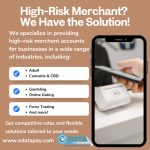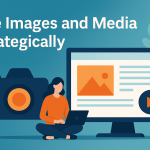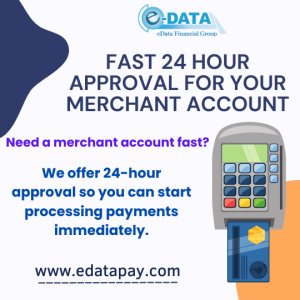
Understanding Facebook Ads for E-Commerce
Facebook ads for E-commerce are a very popular and cost-effective way to increase traffic to your site and increase brand visibility. So, what is Facebook Ad? Facebook ad means advertising on Facebook. Facebook is one of the least expensive online advertising media and it has vast targeting options. Facebook ads use profile information, demography, location, etc to target their audience. In Facebook, while setting an Ad you can choose several layouts like images, videos, carousel ads, collection ads, etc and after creating we can even bid for each click or impressions your ad obtains. Therefore, ecommerce companies consider Facebook ads as an efficient tool to increase brand profitability and prominence.
Facebook Targeting Options
Earlier we have mentioned that Facebook has vast targeting options. Now we can peek into those targeting options.
To make your Facebook ads more successful, you want to make sure you are targeting the right people.
- Geography: Targeting audience based on their country, state, or province
- Behaviors: Target audience based on purchase history or search history.
- Age and Gender: Narrowing audience of a particular generation or gender.
- Language: Limiting audience based on language.
- Connections: Influence people who are associated with your Facebook Page, app, event, or their mutual friends.
- Look-a-like Audience: Extent to people who are similar to your current audience. This lookalike audience can be found through sources like Previous customers, Newsletter signups, Facebook followers, Frequent website visitors, Frequent video viewers.
You should not stick to a single method or tactic in order to increase ROI (Return On Investment). If the way you are using is not effective then try another tactic. Use the trial and error method to test a variety of ads by changing the creative, copy, offer, and targeting.
Effective presentation of Ad on Facebook
When it comes to ads what you present is equally important as how you present it. While creating the ad always try to maintain simplicity. Overly complex ads can divert attention from your product.
Online consumers always compare brands, searching for offers on the same product, and assessing products based on product reviews. Since Facebook is a community focused platform this is a really important factor. So, incorporating social proofs such as testimonials, product reviews, etc can be very effective and can increase your business.
Different types of Creatives
Knowing the pulse of the audience, we can use different creatives to showcase your product.
- HD Quality: Always try to use high-quality HD images and videos for your ads: Always try to be professional and use videos or images that can connect with the audience. Use video ads to tell your product’s or brand’s story.
- Multiple Products: Use catalogs, product sets, and dynamic ads to display a wide variety of your products.
- Carousel Ads: These ads are focused on a series of images which can be either of the same product or different ones. This displays more than one image and/or video or headlines and links in a single ad. Viewers get all the information that the advertiser wants them to see at once.
- Catalog ads: A catalog is a container that holds information about the items you want to advertise or sell across Facebook. A catalog includes the brand’s inventory like images and information of the products from the website.
- Collection Ads: Generally, these formats are a blend of both videos and images. These ads are creative which allows customers to interact with advertisers. Collection ads are much more personalized, customizable, and automated than Carousel ads.
Evaluation of Ad-result
There are certain terms you should know while evaluating your ad result.
- Clicks: Number of clicks your ad gets
- Impressions: Number of times your ad had been displayed on the audience screen for the first time.
- Click-Through Rate (CTR): Ratio between the number of clicks and impressions
- Reach: Number of people your ad was displayed to
- Frequency: Average number of times your ad was exposed to a target.
- CPM: Average price paid to have 1,000 impressions on your ad
- CPC (Cost per Link Click): Average cost paid each time when someone clicks your ad)
There are different methods to evaluate your Facebook ad result
- Evaluate reach and Impression: This explains how many people viewed your content
- Evaluate Engagement: Evaluate clicks, likes, shares, and comments on your ad. High engagement rates show that your content is engaging and works with advertising algorithms and give a greater reason to display the ad to your audience.
- Evaluate Click-Through Rate: The CTR for your Facebook Ads indicates ad quality. The more CTR means the more relevant and engaging your ad is.
- Evaluating website traffic through referrals from Facebook: Keep an eye on on-site analytics to assess the number of referrals getting from Facebook.
- Monitor bounce rate and conversion rate: Bounce rate the number of people who visit the website and leaves without further engagement. This will give us an insight about the contents we should improve. Whereas, the conversion rate is the number of people who turn from visitors to actual customers.
Cost and Budgeting
Before we have mentioned that Facebook ads are cost-effective but we really haven’t discussed the budgeting policies of Facebook.
- Bidding strategy: There are two types of bidding strategies Lowest Cost- strategy and Target Cost-strategy.
- Lowest Cost- strategy: Facebook provides the lowest bid amount to gain results. This can affect the visibility of the ad if the bid amount is too low
- Target Cost-strategy: You will mention how much do you want to spend per conversion. This strategy enables testing profitability early on if we are sure about how much we are able to spend per conversion.
- Placement of Ad: Facebook charges a different price for different positions where Ad is been displayed. That is, displaying an ad at the center and the side of the site cost differently.
Conclusion
Through this article, we have discussed about Facebook Ads, Targeting Options, Different types of creatives, how to evaluate your ad result, and the cost and budgeting of Facebook Ads. Knowing your audience and constructing your ad properly can create a huge effect in your e-commerce market and helps to grow your business. Creating and publishing an Ad is not just enough. We should access the Ad effectiveness and make changes accordingly to improve performance.








